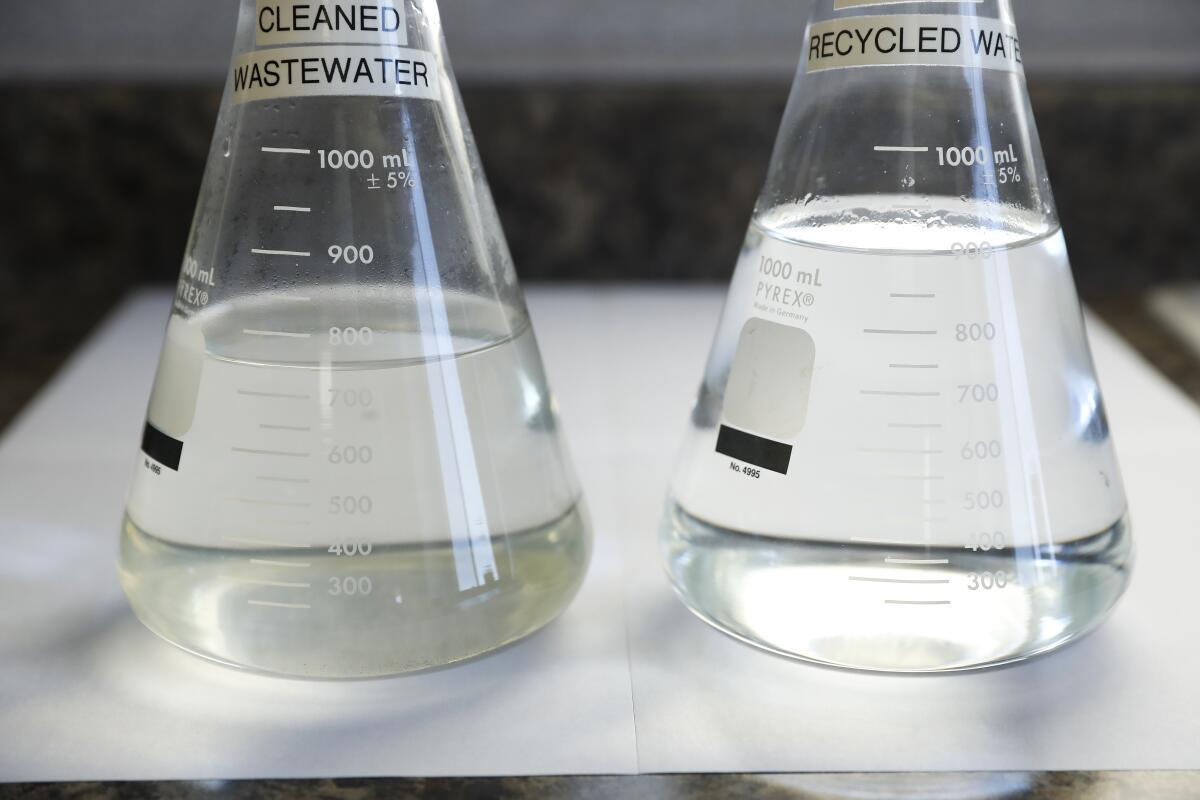Letters to the Editor: How ‘toilet to tap’ panic showed us the power of ignorance

- Share via
To the editor: The phrase “toilet to tap,” coined in the 1990s by those who opposed the idea of recycling wastewater, serves as a reminder of the detrimental effects of ignorance. (“California prepares to transform sewage into pure drinking water under new rules,” Dec. 17)
We find ourselves in a water crisis brought on by a complete lack of understanding of climate change and an unwillingness to adopt any changes to water usage or conservation. Think how much further we would be had we embraced the much needed “direct potable reuse” policy 30 years ago as a means to address the water shortage.
Water is life, and we had better start implementing policies to address the serious water shortage before it is too late. If you think going without fossil fuels is an inconvenience, try going without water.
Jason Y. Calizar, Torrance
..
To the editor: Ian James’ recent article did an excellent job of explaining the opportunity presented by new state regulations for direct potable reuse, which will put “highly treated [waste] water straight into the drinking-water system,” with stringent public health and safety protections.
Today, L.A. County imports 55% to 60% of freshwater from out-of-area sources, including the Colorado River, the Sacramento-San Joaquin River Delta and the streams that feed Mono Lake. Water imports are expensive, energy intensive and increasingly unreliable as the West gets drier.
L.A. County could potentially get 30% to 40% of our freshwater from purified wastewater. If we fully operationalize local water opportunities available — including stormwater capture, groundwater cleanup and conservation — the region could eventually rely on water imports for only 20% of local supplies. L.A. County’s new water plan hopes to hit that target by 2045.
Shifting to primarily locally sourced water is key to ensuring a resilient future. Embracing wastewater recycling is one of the best things we can do to make that happen.
Bruce Reznik, Los Angeles
The writer is executive director of LA Waterkeeper.
..
To the editor: Sewage water includes the chemicals and their metabolites that doctors give to patients. Think of the chemotherapy, antibiotics, hormones, blood pressure medications and cholesterol-lowering medications that are excreted into our wastewater.
No current technology can fully remove these chemical products from wastewater. No technology exists to even measure these chemicals in sewage treatment plants. Chemists can do individual tests, but no mass chemical analysis exists for this to be done.
The decision makers have not done all their homework. They are looking at water and bacteria, but ignoring many of the chemicals that are in wastewater.
Steven Kamajian, D.O., Montrose
..
To the editor: Decades ago my brother, a retired civil engineer, approved some structural plans for the Hyperion Water Reclamation Plant in Playa del Rey. Upon its completion, he was invited to visit the facility and test the water.
He viewed the chemical testing report before being given a sample, which he said tasted as pure and flavorless as any tap or bottled water you could buy.
Climate change is having a dramatic effect on the availability of potable water around the globe. We need to get our heads out of the toilet and deal with all viable options for providing humans with “blue gold.”
Water reclamation works.
Matt Giorgi, Brea





